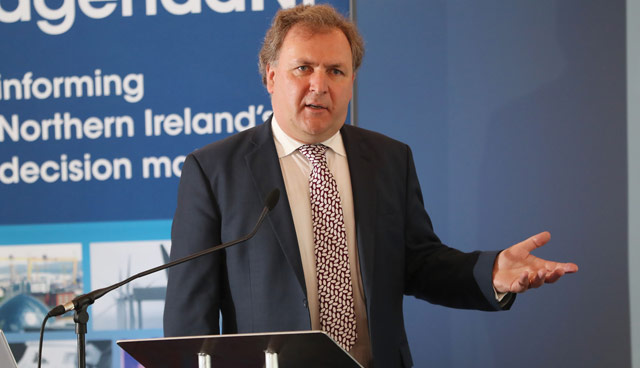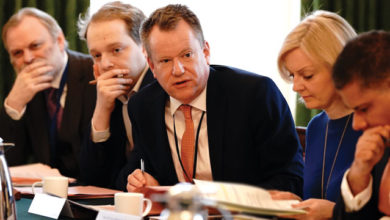Brexit: Deal or No Deal?

Given the lack of progress in negotiations since March, the possibility of a ‘no deal’ Brexit is real, writes QUB’s David Phinnemore.
The UK’s negotiations on withdrawal from the EU are entering what should be their final phase. If the UK is to leave the EU with a deal on 29 March 2019, agreement on the terms of withdrawal needs to be reached in the coming months. The aim of the UK Government and the EU27 is to have a deal agreed at the meeting of the European Council on 18-19 October. The agreement will then have to be approved by the UK Parliament and the European Parliament.
Whether a deal will be reached is very much an open question. Given the lack of progress in negotiations since March, the possibility of a ‘no deal’ Brexit is real. Hence, the last month has been dominated by claims of what a ‘no deal’ – and therefore a disorderly and potentially chaotic Brexit – would entail as well as belated government suggestions of what contingencies need to be put in place. Businesses that have not already drawn up plans are being advised to do so.
The prospect of a ‘no deal’ has been put at 50:50 if not higher, with the odds shortening almost on a weekly basis. The UK and the EU27 are though committed to reaching a withdrawal deal. And more than 80 per cent of the text of a withdrawal agreement has been agreed. The problem is that the figure has not moved much since the updated version of the draft text published in March 2018.
There are essentially two major outstanding issues. The first is the Irish dimension and primarily the ‘backstop’ arrangements to avoid a hard border if adequate UK-wide arrangements are not agreed and in place by the end of the UK’s ‘transition’ period out of the EU which is expected to end on 31 December 2020. Although the UK and EU27 agree on the range of issues that need to be addressed, notably market access, customs arrangements and regulatory alignment, the UK rejects the EU proposal that, as a backstop arrangement, Northern Ireland would remain part of the customs territory of the EU. Unless the UK is also in the EU customs union such an arrangement would lead to additional controls and checks on goods entering Northern Ireland from the rest of the UK.
The second issue is the content of the declaration on the framework for future UK-EU relations that will be attached to the withdrawal agreement. This is expected to set out – potentially in detail, although the document could also be relatively brief – the anticipated basis for UK-EU trade relations after the transition period, commitments on regulatory alignment, modalities for future cooperation, including on security, and the institutional arrangements for the new relationship.
As yet, no draft of the declaration has been published. In part, this reflects the fact that only well into the summer did the UK Government reach agreement – albeit at the expense of the resignations of the Foreign Secretary and the Secretary of State for Exiting the EU – on its position on future UK-EU relations. The so-called ‘Chequers’ agreement, presented in a White Paper on 12 July 2018, referred to a ‘principled and practical Brexit’ and the establishment of a new relationship based on a free trade area for all goods (including agricultural goods). In addition, there would be: a new ‘Facilitated Customs Agreement’; a ‘common rulebook’ of harmonised rules for the movement of goods; a security partnership; participation in key EU agencies; ‘cooperative accords’ in areas such as science and education; and ‘joint institutional arrangements’.
Reaction to the Chequers proposal has been far from enthusiastic. The EU’s chief negotiator, Michel Barnier, noted that it contains ‘several elements that open the way for a constructive discussion’ but raised a host of questions on how compatible the UK Government position was with three core EU principles: the integrity of the EU internal market, and customs union and common commercial policy; the indivisibility of the free movement of goods, services, capital and people; and the autonomy of the EU’s decision-making. Chequers is therefore welcomed less because of the content and more for the fact that at last the UK Government had produced a formal position.
“More than 80 per cent of the text of a withdrawal agreement has been agreed. The problem is that the figure has not moved much since the updated version of the draft text published in March 2018.”
In many respects it is within the UK that the Chequers plan has been most widely criticised and not just by opposition parties but often more vociferously from within May’s own party. Leading Conservative Brexiteers claimed it would lead to ‘Brexit in name only’, keep the UK too close to the EU and would amount to ‘economic vassalage’. They promise their own alternative plan. Even if May were to secure EU agreement to some variant of what she has proposed, there is scant prospect at present of her being able to secure majority support in the House of Commons for it; hence the mounting fears of a ‘no deal’ Brexit.
Belated and increasing acceptance that a ‘no deal’ Brexit could be chaotic is focusing minds on securing a deal. The defiant – yet utterly misplaced – assertions of many Brexiteers that the UK can simply walk away from the withdrawal negotiations and all will be fine are being increasingly rejected as naïve and wishful thinking.
However, if a disorderly and potentially chaotic Brexit is to be avoided, the terms of the withdrawal agreement need to be agreed. Key here is the content of the declaration on the framework for future UK-EU relations and adjustments to the EU ‘backstop’ proposals. If the content of and the commitments set out in the declaration envisage a relationship reflecting at least the spirit of the Chequers proposal, then that might provide May with sufficient cover to agree to the terms of withdrawal albeit with some EU concessions on the backstop – which it would be claimed would never have to the be used – not least on the language used in it and the governance arrangements.
There are many ifs here; and the Brexit process remains plagued by political infighting within May’s Conservative Party where grassroots opposition to the Chequers plan is widespread. Working against May securing a deal in October are the ever vocal hard Brexiteers, a narrow parliamentary majority, and the Conservative Party conference. Add into the mix EU insistence on its principles, growing frustration and weariness among the EU27 with the whole process, and the clock ticking on the two years for concluding and ratifying the terms of withdrawal, the coming months promise to be among the most difficult of the withdrawal process.
Finally, a reminder: the current negotiations are only on the terms of the UK’s withdrawal. Once they have been completed – assuming they will be – and the UK has left the EU, negotiations will begin on the future relationship. Given domestic divisions over UK policy, those negotiations promise to be as fraught – and probably more so – than those of the last year. Withdrawal is but a stage in the Brexit process.





